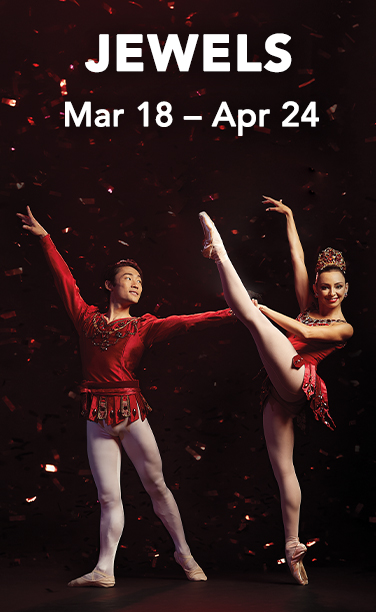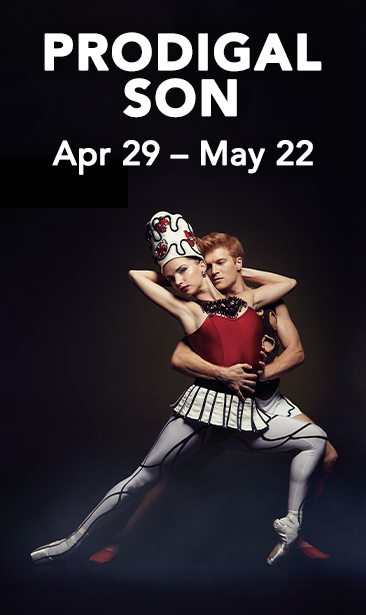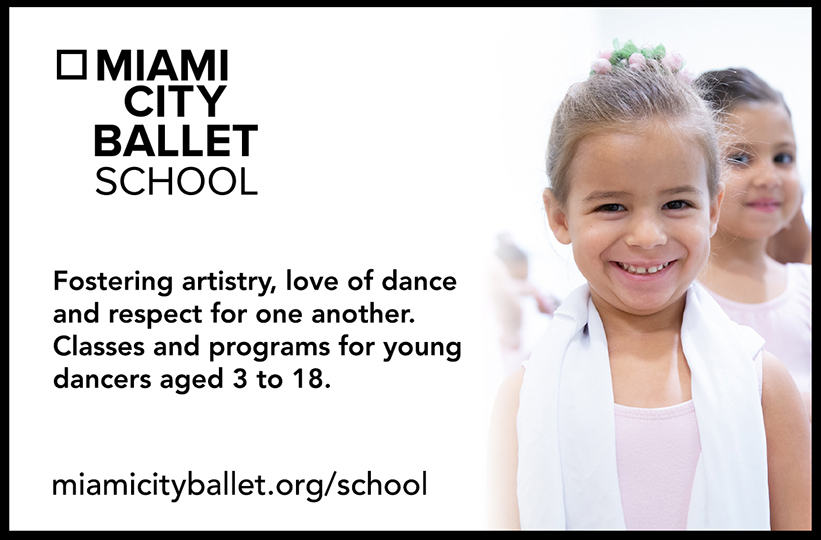Dear Friends,
Welcome. It is an absolute joy to have you with us for the North American premiere of Alexei Ratmansky’s Swan Lake. A timeless classic, it has endured the test of time because of its magnificent storytelling – a story as relevant today as it was 144 years ago when it premiered.
Giving our company dancers and more than 20 of our Miami City Ballet School students an opportunity to experience the magic and thrill of performing what is one of the most challenging and virtuosic ballets for the first time in our company’s history, feels like a remarkable accomplishment.
Its simple story of beautiful maidens who are turned into swans at night under the spell of an evil sorcerer that only true love can break, this masterpiece continues to capture our imaginations and our emotions because it is a universal story about the age-old conflicts of good over evil, promises made and then broken, of despair, betrayal, doom, tragedy, but it’s also a story about courage, hope, love, and forgiveness and how much stronger and more potent these feelings are in the end.
Bringing this production to our South Florida stages has been a real labor of love, six years in the making. Everyone – from our devoted donors to our extraordinary artistic department, school, wardrobe staff, production, fundraising and marketing teams – has worked tirelessly to bring this production to our South Florida stages, and we are grateful for their unwavering dedication.
We are honored to have you with us.

Lourdes Lopez
Artistic Director
MIami CIty Ballet

Tania Castroverde Moskalenko
Executive Director
Miami City Ballet
By Alastair Macaulay
Swan Lake is the most familiar of ballets and the most unknown. I remember a single week when all four Britain’s foremost ballet companies were dancing, guess what, Swan Lake. But were they? Many productions of Swan Lake tell different stories with different choreography. There are multiple versions of Tchaikovsky’s score. Sometimes both heroine and hero die at the end, sometimes only one or other dies, sometimes neither. If one version is Swan Lake, how can the others be?
Everything we thought we knew about this classic is unknown. For millions (especially since the movie Black Swan), it’s about a ballerina who plays two opposite but lookalike heroines: the vulnerable and innocent white Swan Queen Odette and her sensual, worldly rival, the Black Swan Odile. Yet Odile is never a swan. Nor in early performances did she wear black. And the Odette we see onstage, danced by a ballerina, is a woman, not a swan. So which Swan Lake has the choreographer Alexei Ratmansky staged for Miami City Ballet?
Tchaikovsky first composed Swan Lake in 1877 for a Moscow production. The production had a limited success; he himself was, characteristically, critical of his own music. He later gained greater acclaim when he returned to ballet with the premieres of The Sleeping Beauty (1890) and The Nutcracker (1892) at the Mariinsky Theatre in St Petersburg, when the veteran but superlative choreographer Marius Petipa, his assistant Lev Ivanov, and the conductor Riccardo Drigo brought them to the stage. Tchaikovsky then died in 1893, after drinking cholera-infected water - but it’s possible (too little is known for any certainty) that, before he died, he had begun discussions about a revised Swan Lake for the Mariinsky.
Not only had Tchaikovsky died before this could reach the stage, but Petipa’s health prevented him from completing the Mariinsky production; he delegated the lakeside scenes to Ivanov. Nonetheless Petipa and Drigo, with Ivanov’s help, gave Swan Lake a structure and drama that almost at once made theirs the definitive Swan Lake – definitive even though, especially since the 1960s, many further revisions have been made. Drigo and Petipa, possibly following Tchaikovsky’s suggestions, moved musical items around, added three items of Tchaikovsky’s recent piano music (arranged for orchestra by Drigo), made cuts and adjustments, heightening Swan Lake as a drama reaching peaks of classical dancing in each scene. And Ivanov’s choreography (possibly following Petipa’s prescription) established the lakeside scenes as dramatic poetry, with chivalry, classicism, and romanticism all hauntingly amalgamated.
It’s that 1895 production to which Ratmansky has now returned in this one. How has he done so?
Most of the nineteenth-century classics of today’s international ballet repertory come to us by way of Russia. (Even Giselle, which had begun life in Paris, was danced in no country but Russia between 1870 and 1909.) These ballets’ dance steps were recorded there in the late nineteenth and early twentieth centuries in Stepanov notation, a new conversion of dance steps into writing. (The word “choreography” originally meant “the writer of dances”, i.e., dance notation.) Many ballet students in St Petersburg learnt Stepanov notation as a formal part of their studies.
But with the Bolshevik Revolution of 1917, many of Russia’s most prestigious dance folk moved permanently to the West. One of them was the ballet régisseur of Russia’s Imperial Theatres, Nikolai Sergueyev (1876-1951) or Nicholas Sergeev (Western spellings vary). When leaving Russia, he took with him the unique books of Stepanov dance notation for the old ballets. He soon – 1921 - became involved in staging The Sleeping Princess (The Sleeping Beauty as we usually know it) in London for the impresario Serge Diaghilev. From then on, Sergueyev staged successive Western productions of nineteenth-century ballets in the West. In particular, he staged Giselle, Swan Lake, The Nutcracker, and The Sleeping Beauty for a young British company, the Vic-Wells Ballet, run by Ninette de Valois. That troupe, which today has become the Royal Ballet of London, made those nineteenth-century ballets the central canon of its repertory - something no Western company had before – and so, in the second half of the twentieth century, became known as the foremost guardian of these ballets.
Between 1921 and his death thirty years later, Sergueyev did important work in the West. Thanks largely to him and to the global influence of the Royal Ballet, those ballets became, in due course, “the classics”: the core of what many companies dance today, from Toronto to Tokyo. Over the last forty years, however, it’s gradually become apparent that the notation books he brought from Russia contained features he had never realized onstage (they also included whole ballets that had fallen out of repertory) and other details that, even at the largely conscientious Royal Ballet, had been smudged or altered.
Ratmansky is not the first person in recent years to investigate Stepanov notation. From Seattle to Moscow, a number of historically informed productions have been restoring the ballet classics: the St Petersburg production of The Sleeping Beauty, the Moscow production of Coppélia, the Pacific Northwest Giselle are among those that have served like the X-ray and cleaning of Old Master paintings. But Ratmansky was already a big name across the dance world - a widely admired and high-prestige choreographer with strong gifts both for pure dance and for narrative fantasy - before he began to study Stepanov. Another is that he is among the most historically conscious of all choreographers, spending time in museums and galleries (Instagram followers should check out his @grecoromansky posts, a wonderfully catholic and eclectic array of photographs of artistic creations from the Greek and the Roman world), and a keen reader of dance literature. He is, furthermore, well placed in the dance circles of Russia and the West. He has been working with Western companies since 1992, was artistic director of the Bolshoi Ballet of Moscow in 2004-2008, has been artist in residence at American Ballet Theatre since 2009, and has choreographed for more or less all the world’s top-league ballet companies. There are blank passages where the old Stepanov notation leaves much to the stager’s imagination: Ratmansky lacks neither historical imagination nor a keen sense of style.
The revelations of this Ratmansky production of Swan Lake occur in every scene. In terms of dramatic poetry, the most valuable restorations are in the two lakeside scenes. In the first of these, Siegfried is not the only huntsman who comes to the lake. In one passage, after his first meeting with Odette, he is joined by his trusted companion Benno in seeking Odette again. When she enters, she goes first to Benno, striking a pose on his arm; it’s as if she can approach Siegfried only by stages. She knows he has said he loves her: can she trust him? And what does this involve for her swan-maiden companions?
As Siegfried first partners Odette, we find that this is no simple situation. Eight child-swans form an arc-like group behind them, like a frame suggesting her vulnerability. And Benno, the loyal squire, helps to partner Odette: she seems never to see him, but at several points she falls back into his arms, as if swooning, withdrawing from the intimacy of dancing with Siegfried.
What’s more, other huntsmen join the female corps of swan-maidens, like protective suitors. At times, the whole Odette-Siegfried relationship (full of apprehension and diffidence on her part) becomes an amplified version of men’s chivalrous courtship of women. At other times, only Odette and Siegfried move, while everyone else stands. And in yet other sequences, the swan-maidens respond expressively to the Odette-Siegfried relationship, as if showing that their fate rests on hers.
Much of the central choreography for Odette is as we’ve often seen it in most other productions (though Ratmansky has restudied crucial features of Odette’s body language, especially above the waist, after examining photographic evidence of the earliest Russian Odettes). But the situation around them becomes, as Ivanov made it, a multi-layered drama like no other in ballet.
In the final lakeside scene – in the mood of despair that follows Siegfried’s declaration of love for the wrong woman, Odile, in the ballroom - Ratmansky has restored Ivanov’s dances. Although Odette’s fate has been sealed and her hopes of freedom are shattered, Siegfried’s return shows that it is indeed she whom he truly loves after all. And so, the desolate mood of this final scene keeps changing, with moving highs and lows amid the situation’s hopelessness. All shown in the beautifully elegiac number (set to the music Tchaikovsky originally composed as “Un poco di Chopin” for the piano, poignantly orchestrated by Drigo) in which Odette dances again with Siegfried, with other swan-maidens joining in.
Ratmansky has even staged one important dance that’s never been previously seen in the West. This, occurring in the first scene, is Petipa’s spectacular ensemble waltz of celebration for Prince Siegfried’s birthday. Marvelously, this shows how well - and how musically - the master-choreographer knew how to compose large forces in changing geometries. In the ballroom, where the 1895 Odile wore a dark tutu of many colors rather than black, many dance details have been recaptured. Above all, Odile’s final dance after the celebrated thirty-two fouetté turns shows both her exultance and brilliance: this is not any obvious villainess proclaiming “I am evil and I’ve conquered you” (as seen in many other Swan Lakes) but a scintillating, mysterious enchantress.
A colossal deal of research went into Ratmansky’s preparation for the Zürich world premiere of his Swan Lake. Yet he and his wife Tatiana Ratmansky keep returning to the Stepanov notation, noticing new points they missed, and to the photographs and films of this ballet’s long and illustrious performance history. In 2020, he was asked – about another of his Petipa productions, Harlequinade – “Are you making changes/improvements/corrections?” He replied “Always!”
Miami City Ballet has a diverse roster of 54 dancers and a repertoire of more than 130 works. As one of the most renowned ballet companies in the country, Miami City Ballet performs for nearly 125,000 patrons annually during its South Florida home season in Miami, Fort Lauderdale, West Palm Beach and tours to major cities domestically and internationally, including recent visits to New York City, Washington, D.C., Chicago, Los Angeles, and Paris.
Miami City Ballet School, the official school of Miami City Ballet, is one of the most respected ballet training academies in America. The School trains students, ages 3-18 year-round, and grants more than $650,000 in scholarships annually.
Miami City Ballet’s Community Engagement programs, serving more than 12,000 people annually in schools and communities; our free programs use the power of dance to uplift, teach and bring joy.
Miami City Ballet was founded in 1985 by Miami philanthropist Toby Lerner Ansin and Founding Artistic Director Edward Villella. It is headquartered in Miami Beach, FL, at the Ophelia & Juan Js. Roca Center, a facility designed by renowned architectural firm, Arquitectonica.
Lourdes Lopez has become one of the ballet world’s most prominent and accomplished contributors. Dance Magazine named her a 2018 recipient of its prestigious Dance Magazine Awards, choosing Lopez for her “…admirable stewardship of Miami City Ballet, building upon the company’s Balanchine legacy while also embracing the local culture and community of Miami,” and as “…an exemplary leader, someone whom dancers look up to and are inspired by.” In 2017, the magazine also named her one of “The Most Influential People in Dance Today”.
She became Artistic Director of Miami City Ballet in 2012, bringing with her a nearly 40-year career in dance, television, teaching and arts management. As a Soloist and Principal Dancer with New York City Ballet, Lopez danced for two legends of the art form, George Balanchine and Jerome Robbins. Under Lopez’s direction, Miami City Ballet has become one of the country’s premier ballet companies. According to The New York Times, “This troupe [is] at the forefront of all those dancing choreography by George Balanchine today…. Bold, light, immediate, intensely musical, the dancing of Miami City Ballet flies straight to the heart.”
Born in Havana, Cuba in 1958 and raised in Miami, Lopez began taking ballet lessons at the age of five, on the recommendation of a doctor. At the age of 11 she received a full scholarship to the School of American Ballet (SAB), the official school of New York City Ballet, splitting the year between Miami and New York City. At fourteen, she moved to New York permanently to devote herself to full-time studies at SAB, and shortly after her sixteenth birthday, joined the corps de ballet of New York City Ballet.
Under the direction of George Balanchine and Jerome Robbins, her star rose quickly at New York City Ballet. In 1984, she was promoted to Soloist, performing countless featured roles including Balanchine’s Violin Concerto, Liebeslieder Walzer, Firebird, Serenade, Symphony in C, Agon, The Four Temperaments; and Robbins’ Dances at a Gathering, Glass Pieces, Fancy Free, In the Night, Four Seasons and Brandenburg.
Upon retirement, Lopez joined WNBC-TV in New York as a Cultural Arts reporter, writing and producing feature segments on the arts, artists and arts education. She was also a full-time senior faculty member and Director of Student Placement, Student Evaluation and Curriculum Planning at New York’s Ballet Academy East. She served on the dance faculty of Barnard College and guest taught at numerous dance institutions and festivals in the United States.
In 2002, Lopez became the Executive Director of The George Balanchine Foundation, which works to educate the public about dance and to further the art of ballet, with a special emphasis on the work and achievements of George Balanchine. In this position, she oversaw the 2004 Balanchine Centennial Celebration, a worldwide festival honoring the choreographer and his legacy. Lopez co-founded The Cuban Artists Fund, which supports Cuban and Cuban-American artists in their endeavors.
In 2014, Lopez was elected to serve on the Ford Foundation’s Board of Trustees and is presently starting her second term, marking the first time an artist was elected to serve on its board. In 2011, she received the prestigious Jerome Robbins Award for her years in dance. She has served as a dance panelist for the National Endowment for the Arts.
In 2017, she received an award from the American Immigration Law Foundation honoring Cuban Americans for their accomplishments and contributions to American society. She also co-founded Morphoses with Christopher Wheeldon in 2007—a New York-based dance company aiming to revitalize dance through innovative collaborations with important artists from the worlds of music, visual arts, design, film and fashion; and by inviting younger and broader audiences to engage in and actively experience dance.
In 2019 she was honored with Ballet Hispánico’s “Toda Una Vida” Lifetime Achievement Award and in 2021 she was awarded the prestigious “Una Vida para la Danza (A Life for Dance) by the International Ballet Festival of Miami.
Lopez is married and is the mother of two daughters, Adriel and Calliste.
Tania Castroverde Moskalenko joined Miami City Ballet as Executive Director in August 2018, bringing with her more than 20 years of experience leading performing arts institutions and guiding them through strategic, financial, and operational turnarounds. As MCB’s Executive Director, she oversees finance, fundraising and development, marketing and communications, community engagement, human resources, and the business side of the Miami City Ballet School. Sixty days after her arrival at MCB, she presented the Board with an ambitious plan for a $55M capital campaign to ensure MCB’s long-term financial health. To date, the 4-year Transforming Lives Campaign has raised 97% of its goal.
Prior to MCB, Castroverde Moskalenko served as the Chief Executive Officer of Chicago’s Auditorium Theatre, revitalizing the organization’s financial health through new programming, increased earned revenue, and expanded philanthropic support.
In 2017, she was named 'Chicagoan of the Year for Dance' by the Chicago Tribune. Prior, Castroverde Moskalenko spent four years as President and CEO of the Center for the Performing Arts and the Great American Songbook Foundation in Indiana where she implemented a strategic plan that increased and diversified programming, audience reach, board membership, and contributed revenue. Before that, she spent seven years as the Executive Director of the Germantown Performing Arts Centre in Tennessee, where she erased a structural deficit, created a reserve fund, and founded successful programs such as the GPAC Youth Symphony Orchestra and Jazz in the Box.
Castroverde Moskalenko holds a BFA from the University of Memphis, an MA in Philanthropic Studies from Indiana University, and a Certification in Non-Profit Financial Management from Harvard University, John F. Kennedy School of Government. She serves on the Board of Directors of Philanthropy Miami.
Castroverde Moskalenko was raised in Miami where she and her family arrived as political refugees from Cuba when she was six years old. She is the mother of five children and is married to a former Russian ballet dancer, Alexei Moskalenko, who is Assistant Artistic Director of the Youth America Grand Prix.
When she was 5 years old, at the suggestion of an orthopedist, Toby Lerner Ansin’s parents enrolled her in a beginning ballet class to help counteract a condition known as pronation, which occurs when one’s ankles turn in. That class was the beginning of a passionate love affair Toby has had with ballet that continues to this day. Until she was fourteen, determined to become a professional ballet dancer, Toby took classes six days a week. But one day she looked in the mirror at some of the other students in her class and then at herself and that evening calmly told her parents she was no longer going to pursue a career in ballet because while she had the drive, she didn’t have the body or talent to be a dancer. “I look like a limping giraffe,” she said, with finality. Nevertheless, she continued to regularly take class and whenever American Ballet Theatre made its annual appearance in her hometown of Boston, she attended every one of its performances.
In 1985, Toby became involved in the dance scene of Miami and realized that the reason no professional ballet company had been able to sustain itself in South Florida was because it lacked a “luminary,” a credible star who could attract creative talent as well as the money to support it. About that time, a friend, introduced her to Edward Villella. Toby arranged a meeting at her house with Villella that lasted four hours. By the time he left that day, she had convinced him that Miami was about to launch a professional ballet company. That evening she called 6 friends. Each gave her a check for a thousand dollars. She added her own check for a thousand dollars and shortly afterwards, invited Villella, a former star of New York City Ballet to be Founding Artistic Director. Then she relentless went to work raising more funds and recruiting prominent and influential members of the community to share her vision and join the Board of Directors of the fledgling company. Toby’s dream of a professional ballet company soon became Miami’s dream. And about a year later Miami City Ballet gave its first performance. Years later, the company appeared at the Kennedy Center and Edward Villella wrote to her, “Our engagement was the culmination of the vision you had ten years ago, and I am so grateful it was me with whom you shared the dream.”
In 2010, in honor of her 70th birthday and MCB’s 25th anniversary, the Ansin Foundation established the Toby Lerner Ansin Scholarship fund. Each year, Toby sponsors a scholarship for a talented young dancer, which has helped numerous dancers become part of the company. Because of her vision, leadership, and unceasing efforts, Miami City Ballet today is an internationally acclaimed company with a growing reputation as a cradle of creativity for young dancers and choreographers. And Toby has received wide recognition for her accomplishments. Among the awards she has received are: the George Abbott Carbonell Award for Achievement in the Arts, the National Red Cross Spectrum Award for Women, the Florida Arts Recognition Award, the Arts Hero Award from the Arts & Business Council of Miami, the Florida International Press Club Imprint Award, the Woman of Style and Substance Award, and Dance/USA's Champion Award.
But the recognition she takes greatest pride in doesn’t even mention her name. In 2016, MCB received an invitation to dance in Lincoln Center for a week in April. The New York Times dance critic wrote three rave reviews about the company’s performance. Here’s a quote from his reviews, “…the dancing of Miami City Ballet flies straight to the heart…What can be done to bring this company here more often?”
Beatrice Jona Affron has been Music Director and Conductor of Pennsylvania Ballet since 1997. She has led many Balanchine ballets as well as other classics, such as The Sleeping Beauty, Romeo and Juliet, and The Firebird. Also in Philadelphia, she conducted the world premiere performances of Christopher Wheeldon’s Swan Lake. A graduate of Yale University, Ms. Affron studied conducting with Robert Spano and Pascal Verrot at New England Conservatory.
Affron is an active opera conductor and has led several works by Philip Glass, including Galileo Galilei (in Chicago and London) and the national tour of Les Enfants Terribles, in which the composer also performed. She conducted Glass’s Akhnaten for Boston Lyric Opera and Chicago Opera Theater and the premiere of the revised version of Argento’s Miss Havisham’s Fire at Opera Theatre of Saint Louis. Affron has conducted Die Fledermaus at Boston Lyric Opera, and Donizetti’s Lucie de Lammermoor at Glimmerglass Opera.
In recent seasons, she has appeared as a guest conductor with Miami City Ballet, the National Arts Center of Canada Orchestra, the Kennedy Center Orchestra, Atlanta Ballet, Nashville Ballet, Oklahoma City Ballet and Boston Ballet.
PRODUCTION AND LIGHTING DIRECTOR John D. Hall
MUSIC DIRECTOR AND PRINCIPAL CONDUCTOR Gary Sheldon
PRINCIPAL REHEARSAL DIRECTOR Roma Sosenko
REHEARSAL DIRECTORS Joan Latham, Arnold Quintane
COMPANY PIANIST Francisco Rennó
FOUNDING ARTISTIC DIRECTOR Edward Villella
SWAN LAKE
Choreography by Alexei Ratmansky
Music by Peter Ilyich Tchaikovsky*
Set and Costume Design by Jérôme Kaplan
Lighting Design by Mark Stanley
Scenic Supervision by Mark Stanley
Costume Construction Supervision by Mark A. Zappone
*The Swan Lake Music research and preparation of orchestral scores by Lars Payne. Lars Payne Editions, London. Character coaching by Vladimir Kolesnikovs.
SCENIC CREDITS
Assistant Scenic Supervisor Lauren Carroll
Scenery Construction by Hudson Scenic Studios
Scenic Painting by Scenic Arts Studios
Props Construction by Props and Paint, Inc. and Brenbri Properties, LLC
LIGHTING CREDITS
Lighting Assistant Heather Sparling
COSTUME CREDITS
All-Stitch, Andor Studio, Class Act Tutu, Joyce Degenfelder, Luna Pham, Palatine Productions, RusCLothing, Walter Raymond, and Z studios
Miami City Ballet would like to acknowledge Miami City Ballet School students, Dreyfoos School of the Performing Arts students and artists from the Florida Grand Opera who appear in this production.
Arsht Center | Miami
Fri, Feb 11 at 7:30pm
Sat, Feb 12 at 1:30pm
Sat, Feb 12 at 7:30pm
Sun, Feb 13 at 1:30pm
Kravis Center | West Palm Beach
Sat, Feb 19 at 1pm
Sat, Feb 19 at 7:30pm
Sun, Feb 20 at 1pm
Sun, Feb 20 at 7:30pm
Broward Center | Ft. Lauderdale
Sat, Feb 26 at 1:30pm
Sat, Feb 26 at 7:30pm
Sun, Feb 27 at 2pm
Alexei Ratmansky was born in St. Petersburg and trained at the Bolshoi Ballet School in Moscow.
His performing career included positions as principal dancer with Ukrainian National Ballet, the Royal Winnipeg Ballet and the Royal Danish Ballet. He has choreographed ballets for the Mariinsky Ballet, the Royal Danish Ballet, the Royal Swedish Ballet, Dutch National Ballet, New York City Ballet, San Francisco Ballet, The Australian Ballet, Kiev Ballet and the State Ballet of Georgia, as well as for Nina Ananiashvili, Diana Vishneva and Mikhail Baryshnikov. His 1998 work, Dreams of Japan, earned a prestigious Golden Mask Award by the Theatre Union of Russia. In 2005, he was awarded the Benois de la Danse prize for his choreography of Anna Karenina for the Royal Danish Ballet. He was made Knight of Dannebrog by Queen Margrethe II of Denmark in 2001. He won his second Benois de la Danse for Shostakovich Trilogy in 2014.
Ratmansky was named artistic director of the Bolshoi Ballet in January 2004. For the Bolshoi Ballet, he choreographed full-length productions of The Bright Stream (2003) and The Bolt (2005) and re-staged Le Corsaire (2007) and the Soviet-era Flames of Paris (2008). Under Ratmansky’s direction, the Bolshoi Ballet was named “Best Foreign Company” in 2005 and 2007 by The Critics’ Circle in London, and he received a Critics’ Circle National Dance Award for The Bright Stream in 2006 and Shostakovich Trilogy in 2020. In 2007, he won a Golden Mask Award for Best Choreographer for his production of Jeu de Cartes for the Bolshoi Ballet. In 2009, Ratmansky choreographed new dances for the Metropolitan Opera’s production of Aida. Ratmansky joined American Ballet Theatre as Artist in Residence in January 2009.
For American Ballet Theatre, Ratmansky choreographed On the Dnieper (2009), Seven Sonatas (2009), Waltz Masquerade, a ballet honouring Nina Ananiashvili’s final season (2009), The Nutcracker (2010), Dumbarton (2011), Firebird and Symphony #9 (2012), Chamber Symphony, Piano Concerto #1 and The Tempest (2013), The Sleeping Beauty (2015), Serenade after Plato’s Symposium (2016), Songs of Bukovina (2017), Whipped Cream (2017), Harlequinade (2018), The Seasons (2019), Of Love and Rage (2020) and Bernstein in a Bubble (2021).
Ratmansky was named a MacArthur Foundation Fellow for 2013.
Born in Paris, Kaplan studied Scenography at L’Ecole de la Rue Blanche, and after graduating in 1987 began working extensively designing sets and costumes for theatre and opera.
In 1992 he collaborated with the Ballets de Monte Carlo and Jean-Christophe Maillot for the first time on <L’Enfant et les sortilèges and has since designed sets and costumes for many of his other productions.
Kaplan has worked extensively for ballets, with choreographers such as Bertrand d’At, Karine Sporta, David Nixon, Christopher Wheeldon, Ib Andersen and Nacho Duato; and with productions of the Royal Ballet of Denmark, Opera of Strasbourg, Ballet of Shanghai, Opera of Cairo, Teatro alla Scala, Deutsche Oper and the Mikhailovsky Ballet. In 2001, Jérôme became the first French scenographer to be invited to work with the National Ballet of China in Beijing.
Since 2010 Kaplan has worked with Alexei Ratmansky creating sets and costumes on his ballets for the Dutch National Ballet, the Australian Ballet, the Bavarian State Ballet, the Zürich Ballet and for the Bolshoi in Moscow – the world premiere of Lost Illusions, for which he won a Golden Mask Award in 2012 for costume design.
GUEST CONDUCTOR
Beatrice Jona Affron
FIRST VIOLINS
Mei Mei Luo, Concertmaster
Geremy Miller, Assistant concertmaster
Erika Venable, Assistant concertmaster
Victoria Stepanenko
Anthony Seepersad
Jenny Lee Vaughn
Michael O’Gieblyn
SECOND VIOLINS
Dina Kostic *
Sheena Gutierrez
Ericmar Perez
Akiko Rivera
Eduardo Martinez
VIOLAS
Carl Larson *
Modesto Marcano
Valerie Judd
CELLOS
Ashley Garritson *
Angela Maleh
Elizabeth Aron
BASSES
Janet Clippard *
Susan Friend
Douglas Ferreira
FLUTES
Karen Fuller *
Elizabeth Lu
PICCOLO
Elizabeth Lu
OBOES
Erin Gittelsohn *
Kendra Hawley
CLARINETS
Richard Hancock *
Amalie Wyrick-Flax
BASSOONS
Michael Ellert *
Christina Bonatakis
FRENCH HORNS
Hector J Rod *
Raul Rodriguez
Stan Spinola
Sharon Janezic
TRUMPETS
Craig Morris*
Robert Gallagher
Kevin Lyons
TROMBONE
Juan Zuniga *
Karla Rojas
Hugh Harbison
TUBA
Calvin Jenkins *
TIMPANI
Faye Kokkeler *
PERCUSSION
Mikhail Mikhelson *
Doug Friend
HARP
Deborah Fleisher *
* Principal
Geremy Miller, Orchestra Contractor
Swan Lake Supporters
Miami City Ballet extends special thanks to the underwriters of the original North American premiere of Alexei Ratmansky’s Swan Lake. This masterpiece will be the quintessence of MCB’s 2021/22 season, leaving an indelible mark on the Company’s history along with the world of dance. Without the support of these extraordinary donors, Swan Lake would not be possible. We thank you and salute you.
PRESENTING SPONSOR
$1,000,000
Anonymous
FOUNDING SPONSOR
$500,000
Lawrence Herbert
David Herro and Jay Franke
Barbara and John Vogelstein
ODETTE SPONSOR
$250,000
Ruth Wright
ODILE SPONSOR
$100,000
Deborah and Charles Adelman
Jeffrey Davis and Michael T. Miller
Dr. Bruce Halpryn and Mr. Chas Riebe
Kristi and Dean Jernigan
The Krause Family Foundation
Rhoda Levitt
Mary and Saul Sanders
Suzy and Sadek Wahba
Lynn and Louis Wolfson*, II Family Foundation, Inc.
SIEGFRIED SPONSOR
$50,000
Mr. and Mrs. David Mack
BARON SPONSOR
$25,000
Martha and Bruce Clinton, The Clinton Family Fund
Damaris D.W. Ford
National Endowment for the Arts
Miami City Ballet Supporters
Miami City Ballet is grateful for the support of our Foundation and Government partners, Corporate Council and Donors:

Foundation and Government
Corporate Council
Donors and Supporters
Over the past 36 years, Miami City Ballet has risen to become a leading light in the nation's cultural landscape. We are proud to reflect on stage the warmth and vitality of our community and our South Florida home.
This season, revel in the joy of dance with us. Escape to far-away places through beloved classics, be moved and delighted by fresh, innovative premieres. We are thrilled to bring the uplifting power of dance into your world, and hope a little of our signature "sunshine in motion" follows you through the year.
Miami City Ballet School fosters artistry, love of dance and respect for one another, while preparing students to be versatile 21st century dancers with the necessary technique and physical strength to perform ballets in the Balanchine repertory as well as other choreographic styles. Through the School’s affiliation to the world-renowned Miami City ballet, students are offered unique performance opportunities alongside Miami City Ballet dancers and more.






